by Ray Bodrey | May 4, 2018
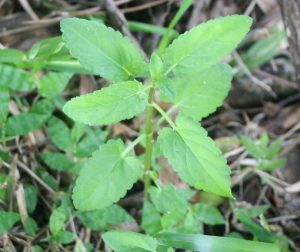
Figure 1: Florida Betony, Stachys floridana. Credit: UF/IFAS Range Cattle Research & Education Center.
If you look closely at your yard, there is a good chance that you will find a plant that, depending on who you ask, is considered either a native wildflower or a weed and there are more than a few species that fit this description. If, upon even closer inspection, you find a plant with root tubers that resemble egg casings or even a rattlesnake’s rattle, you’ve stumbled upon Florida Betony.
Stachys floridana is a perennial broadleaf commonly referred to as rattlesnake weed due to it’s fleshy, white, segmented underground tubers. The plant has an erect stem with leaves that are opposite, shovel-shaped and coarsely serrated. The plant structure is very similar to mint. Flowers, emerging in late spring, are pinkish-purple in color. These inflorescences will also produce fruit, consisting of four nutlets. However, reproduction of the plant and it’s propensity to spread through lawns and gardens primarily occurs through dense root tuber development. Florida Betony’s growing range was originally confined to the state of Florida, but the commercial nursery trade played a major hand in dispersing the plant across the Southeast in the mid-1900’s. It can now be found as far west as Texas and as far north as North Carolina.
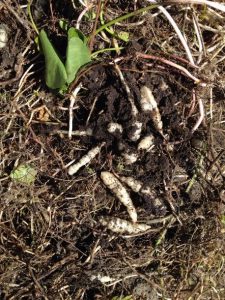
Figure 2: Tubers of the Florida Betony. Credit: Jill Bebee, UF/IFAS Gulf County Master Gardener.It can now be found as far west as Texas and as far north as North Carolina.
This time of year is when Florida Betony thrives. The moderate temperatures of fall and spring are the prime growing periods for Betony. In the heat of the summer, the above-ground structure of the plant will struggle and often disappear completely, only to reemerge in the fall. As a lawn weed, managing tuber development is key to controlling this plant. Applying herbicide to the leaves and stalk may seem at first to have conquered the weed. However, in most cases the tuber will simply regenerate. Glyphosate (Roundup) can be used effectively for control in ornamental plant beds where no turf is present. Be careful when spraying herbicides around trees, shrubs and other desirable plants as any foliar contact will cause phytotoxicity. If you have an infestation of Florida Betony in your turfed areas, there are a few options for control. Regular applications of three way broadleaf herbicides, such as mixtures of 2-4D, Dicamba and Mecoprop, are effective at suppressing this pesky plant. For more information and options, please contact your local county extension office or see the supporting information links below. Always refer to the product label for specific uses, precautions and application rates when using any herbicide.
Supporting information for this article can be found in the following the UF/IFAS EDIS publication, “Florida Betony Biology and Management in Turf” by J. Bryan Unruh, Ramon G. Leon, and Darcy E. P. Telenko: http://edis.ifas.ufl.edu/pdffiles/EP/EP38800.pdf
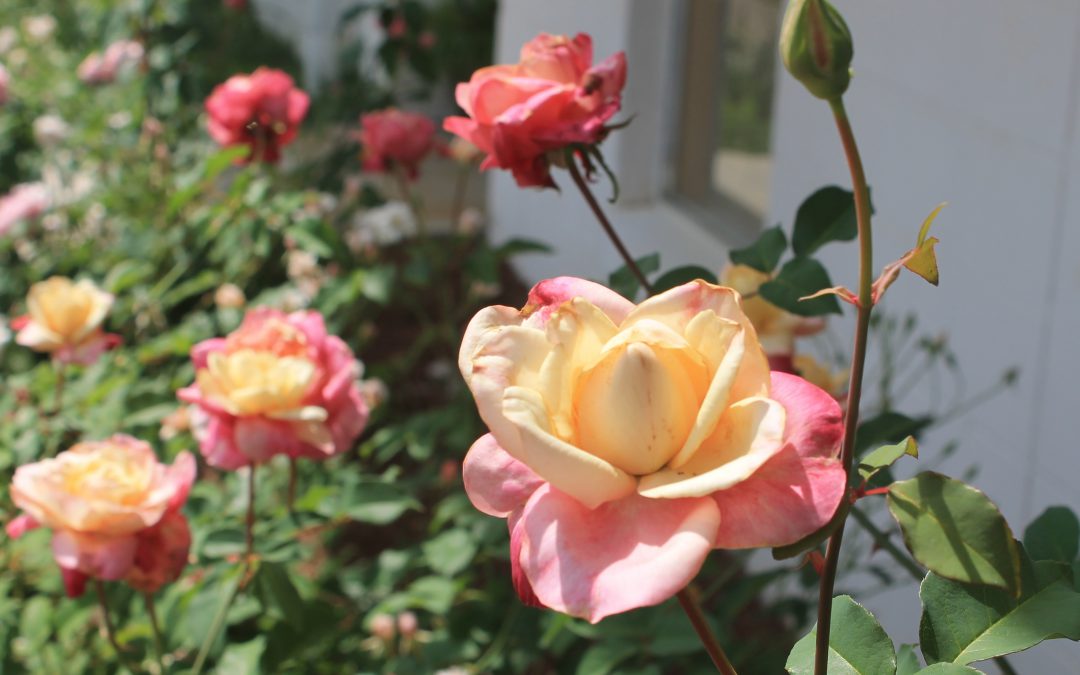
by Matthew Orwat | Apr 17, 2018
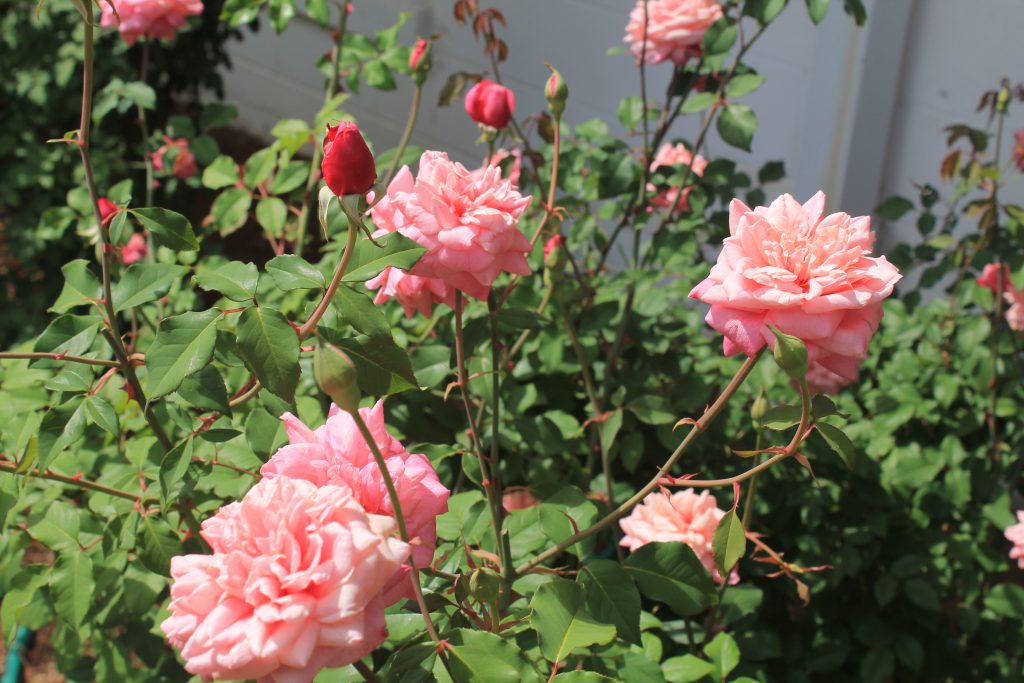
Monsieur Tillier – Tea rose from the late 1800s. A good choice where a large, free-flowering shrub is needed – Image Credit Matthew Orwat
Home Gardeners, when they think of roses, their mind inevitably turns to the ‘Knockout’ rose and its offspring. That’s fine, there’s nothing wrong with ‘Knockout’ roses, it makes a great ornamental landscape plant, and it’s easy to propagate.
With all the ‘Knockout’ mania, since the early 2000s, many garden roses, that are well adapted to the Northwest Florida climate, have been left out of the home garden to a large degree.
Several roses, which were grown in Florida commonly in the last hundred years, and recommended by former University of Florida president H. H. Hume in his book “Gardening in the Lower South,” are still grown here today. To obtain these roses gardeners must look to small nurseries scattered throughout central Florida and Alabama, or order them from larger nurseries in Texas where the “Texas A&M Earthkind Rose Program” has taken off.
Below are a few examples of easy to grow roses, that are just as disease resistant as the ‘Knockout,’ but offer more variety in color and form that home gardeners might enjoy as much as or more than ‘Knockout’. They have been grown successfully throughout southern Texas for over 30 years, and at the Washington County Extension Office for the past seven years without spraying fungicides or insecticides. Several of these cultivars were also involved in a 3-year rose trial at the UF/IFAS North Florida Research and Education Center, in Quincy.
One caveat I have regarding these roses is that disease resistance is lessened when irrigated with overhead irrigation. Even the most disease resistant roses will develop issues if leaves are constantly left wet.
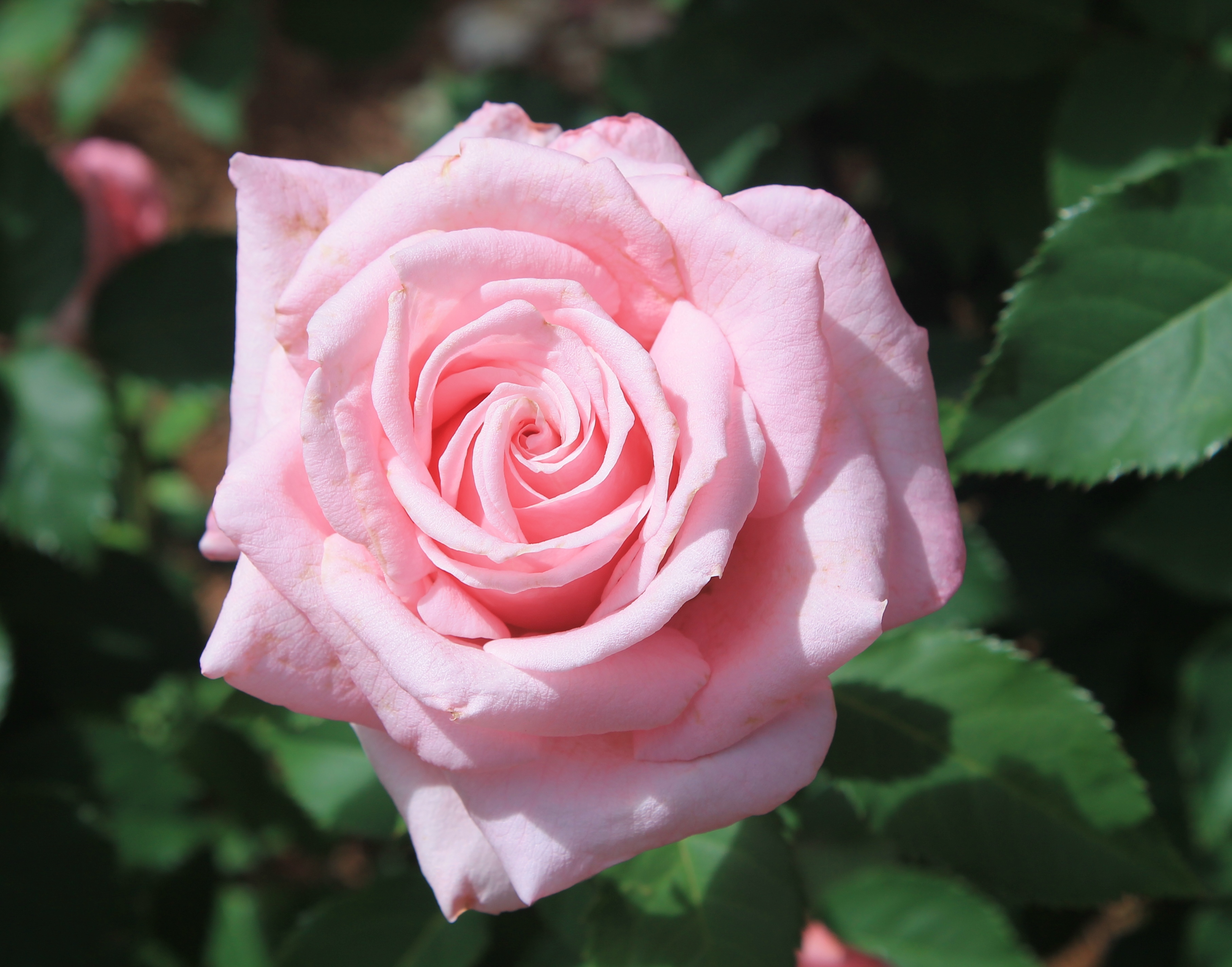
Belinda’s Dream makes a moderately sized shrub and produces large flowers, especially in the spring and fall. Image Credit – Matthew Orwat
‘Belinda’s Dream’
‘Belinda’s Dream‘ was bred by Texas A&M Professor Robert Basye in 1988, as a culmination of years of intense breeding and selection for disease resistant landscape and cut flower roses. It makes a 4-5 foot shrub that grows about 3 feet wide. Apple-green foliage clothe its pleasing shrub form. It’s free flowering but not overly vigorous, so it’s easy to keep in bounds. Disease resistance is high, there’s rarely any blackspot of note, under no-spray conditions, and only slight powdery mildew in a few years when conditions are favorable for fungus development.
In cool spring or fall conditions, the clear pink flowers can top six inches in diameter, and contain over 200 petals, but regular hot conditions during the summer usually reduce flower size to four inches. This rose loves to be part of mass plantings, particularly when planted 3 feet apart in a triangular formation. It has a reputation as being moderately easy to propagate.

Rosette Delizy is very colorful and disease resistant. A great addition where a spot of color is needed – Image Credit Matthew Orwat
‘Rosette Delizy’
‘Rosette Delizy‘ is a French Tea rose that was introduced to the U.S. nursery trade in the mid-1920s. Since it was bred before the days of modern fungicides, it sports excellent resistance to disease. It shows no powdery mildew, and only the occasional leaf with blackspot under no-spray conditions.
This is strictly a rose for the coastal south, since it does not like cold temperatures, and cannot thrive north of zone 7b without protection.
Color is striking, opening yellow with petal edges changing to pink as the flowers age. Cooler weather brings out deeper russet and maroon tones. It has a light “tea” fragrance. This mannerly shrub gets 4-5 feet tall and 3-4 feet wide. It requires very light pruning, and can actually be killed from heavy-handed gardeners with shears in hand. Minor flaws noted in this rose are that it is somewhat sparsely foliated, and somewhat difficult to propagate.

Madame Antoine Mari – The perfect buttonhole rose produces flowers with delicate, soft colors perfect for arranging. This rose is a mannerly grower suitable for smaller landscapes. Image Credit Matthew Orwat
‘Madame Antoine Mari’
‘Madame Antione Mari’, a Tea rose, was introduced in 1900 when the buttonhole rose was all the rage. Massive quantities of perfectly formed delicate buds of pink and ivory quickly open into 3 inch flowers that decorate the bush like butterflies fluttering in the wind. Re-bloom is fast. Additional interest in the landscape is created by the deep red color of new foliage.
This makes a mannerly shrub for the small landscape, easily kept at 3-4 feet tall, and 5-6 feet wide by light pruning. Disease resistance is above average in a no-spray garden, with very low blackspot infection rates, and only occasional powdery mildew. This rose has been found to be easily propagated with the author reaching near 100% success rate.

Mrs. B. R. Cant at the Quincy rose trial in 2013.
‘Mrs. B. R. Cant’
No mention of easy to grow roses is complete without the mention of ‘Mrs. B. R. Cant’. In the trials UF/IFAS horticulturists performed at Quincy and Plant City, this variety was rated the best performer. It has been in continuous cultivation since 1901, and is often found at old home sites and gardens in Washington County.
This makes a large garden rose, easily topping 8 feet in height, and just as wide. Deep pink flowers are borne profusely from March to first frost. Disease resistance is outstanding, and it’s easy to propagate. Plants are densely clothed in medium green leaves. This rose is often grown in hedges as a substitute for a fence. One of the best all-around garden roses for the gulf south.
Nursery Availability
I provide presentations at workshops on these roses multiple times a year, throughout the Florida Panhandle. The recurring question I get is, “Where are these roses available locally?” Hopefully this article will inspire some local gardeners to try these easy to grow roses, and others, since these are just a few of the roses available that do very well in North Florida under no spray conditions. If you are interested in more information, contact, Matthew Orwat at UF/IFAS Extension Washington County.

by Mary Salinas | Mar 21, 2018

European honey bee. Photo credit: UF/IFAS.
Bees, butterflies and other insects play important roles as pollinators in our environment. Over 50 major crops in the United States and at least 13 crops in Florida depend on honey bees. Many native plants in natural areas also depend on insect pollinators for reproduction. In Florida, over 300 bee species play a role in pollination!
Many factors affect the health of our pollinators. One of those factors we can easily control in our own landscapes is exposures to pesticides. How are bees and other pollinators exposed to pesticides? Here are some of the major routes:
- Drift of pesticides sprayed in breezy/windy conditions
- The erosion of contaminated topsoil blowing in the wind
- Direct feeding on pollen and nectar of treated plants
- Contact with pesticides that have blown onto plant surfaces
- Contact with water transpired by leaves of treated plants
- Pesticides that move down through the soil to affect ground dwelling bees and other insects
Did you know that bees become statically charged when they fly causing particles in the air to attract to them?
What are some ways that we can reduce the risk of exposure to pollinators in our landscapes?
- Use integrated pest management principles to reduce the incidence of pests and their impacts.
- Avoid treating areas containing flowering weeds/plants with insecticides. If you must treat your lawn with an insecticide, and it contains flowering weeds, mow the lawn and remove the flowers just before applying the insecticide.
- If you must apply a systemic insecticide to your lawn, leave a buffer strip of several feet between the lawn and the border of landscape beds with flowering plants. This will prevent the flowering plants from up taking the systemic product.
- Postpone any insecticide treatment until after all blooms have fallen from flowering ornamentals. Never apply an insecticide to blooms or flowering plants.
- Avoid the use of neonicotinoids as this class of insecticides can be more toxic to bees than other classes of insecticides. There are many effective alternatives.
Bee friendly to our pollinators!
For more information:
Minimizing Honey Bee Exposure to Pesticides
Creating and Maintaining Healthy Pollinator Habitat – Xerces Society

by Les Harrison | Jul 14, 2017

Praying Mantis, Image Credit Les Harrison
Summertime is bug time in the Florid Panhandle. The weather has provided enough rain for the bugs which depend on a supply of foliage and the temperatures have been ideal for a population explosion.
Stink bugs, leaf-footed bugs, grasshoppers, all sizes and colors of caterpillars and many more have been enjoying the lush and plentiful dining options. More than one Panhandle homeowner or gardener has been plagued by the sudden appearance of a hoard of hungry nuisances which are eyeing the menu choices at residences.
Fortunately, nature has a way of eventually balancing all situations when left to its own devices. With the increase of the plant eaters comes a surge in those insects which restrain the excess population.
One of the most easily recognized predator insects is the praying mantis. This beneficial insect is actually a family with multiple members, some of which have been introduced to Florida.
While there are over 2400 mantis members worldwide, Florida is home to eleven. Two of those exotics have been introduced from other regions, but considered non- invasive.
Mantises are thought to have evolved during the Cretaceous period about 100 million years ago, possibly from a predatory cockroach with similar front legs. Their closest surviving insect relatives are cockroaches and termites, both of which they will consume if given the opportunity.
Like many insects, the mantis is equipped with a tough, durable exoskeleton which provides a basis for successful close quarter combat and meal procurement. These hunters have three other advantages which create a severe vulnerability in their prey’s defense and potential for surviving a mantis encounter.
The mantis is an ambush predator which will lay in wait for the victim/meal to deliver itself. The mantis has the instinctive ability to identify and hide in areas with high amounts of prey species traffic.
This insect is a master at stealth and camouflage. The creature’s coloration and linear shape allow it to blend into the earth tones of many settings.
To complement its ability to conceal itself in plain sight, the mantis can hold perfectly still and patiently wait for the oblivious bug to bumble into sticking range. At that precise moment, the mantis is a blur of lethal motion.
The mantis’ forelimbs are a set of deadly spiked vices used to immobilize and secure its target. It extends these spiny levers forward in a raised position which appears as though it is in a mealtime prayer, hence its name.
The kill technique is to impale and restrain the victim with a single stroke of the forelimbs while holding the victim securely to the mantis’ body. On occasion the attempt fails and the mantis has to apply a more direct approach.
This insect’s beak is designed for slicing and tearing its victim’s body. Its jaw muscles provide the power to effectively employ this tool.
Depending on its stage of live, the mantis will eat a wide variety of creatures. Early stage mantises will eat little flies and other tiny insect (including its siblings), but at maturity they will take on small reptiles and amphibians along with a variety of destructive insects.
Female mantises will even consume their prospective mates. Despite its vicious and cannibalistic nature, the praying mantis is the answer to many gardeners’ prayers.
To learn more about praying mantises and other beneficial insects, check out this EDIS site with many articles on various species of beneficial insects.

by Gary Knox | Jun 29, 2017

IPM for Shrubs in Southeastern US Nursery Production Volume II is the third book released by the Southern Nursery Integrated Pest Management Working Group (SNIPM) and includes chapters on hydrangea, loropetalum, holly, rhododendron (including azalea), Indian hawthorn, and weed management. Each chapter covers history, culture and management of the major species and cultivars in production, as well as arthropod pest management and disease management. Within the discussion of these topics, each chapter includes strategies for developing effective IPM programs for key pests and plant pathogens, including tables of fungicides and insecticides for use with these key organisms. While developed for nursery producers, this information also may be useful to landscapers, students, arborists and others.
This free book is downloadable as pdf chapters at
http://wiki.bugwood.org/IPM_Shrub_Book_II.
The first book, IPM of Select Deciduous Trees in Southeastern U.S. Nursery Production, was released in May 2012 and is available for free download as chapter .pdf files at http://wiki.bugwood.org/SNIPM and as an eBook from the iTunes Bookstore https://itunes.apple.com/us/book/ipm-for-select-deciduous-trees/id541182125?mt=11.
The second book, IPM for Shrubs in Southeastern US Nursery Production Volume I, was released in June 2014 and can also be downloaded as chapter .pdf files at http://wiki.bugwood.org/SNIPM or from the iTunes Bookstore at https://itunes.apple.com/us/book/ipm-for-shrubs-in-southeastern/id903114207?mt=11.
The SNIPM Working Group is a multi-disciplinary group of Extension professionals formed to more efficiently and effectively develop and deliver educational programming to the southern U.S. nursery and landscape industry.











